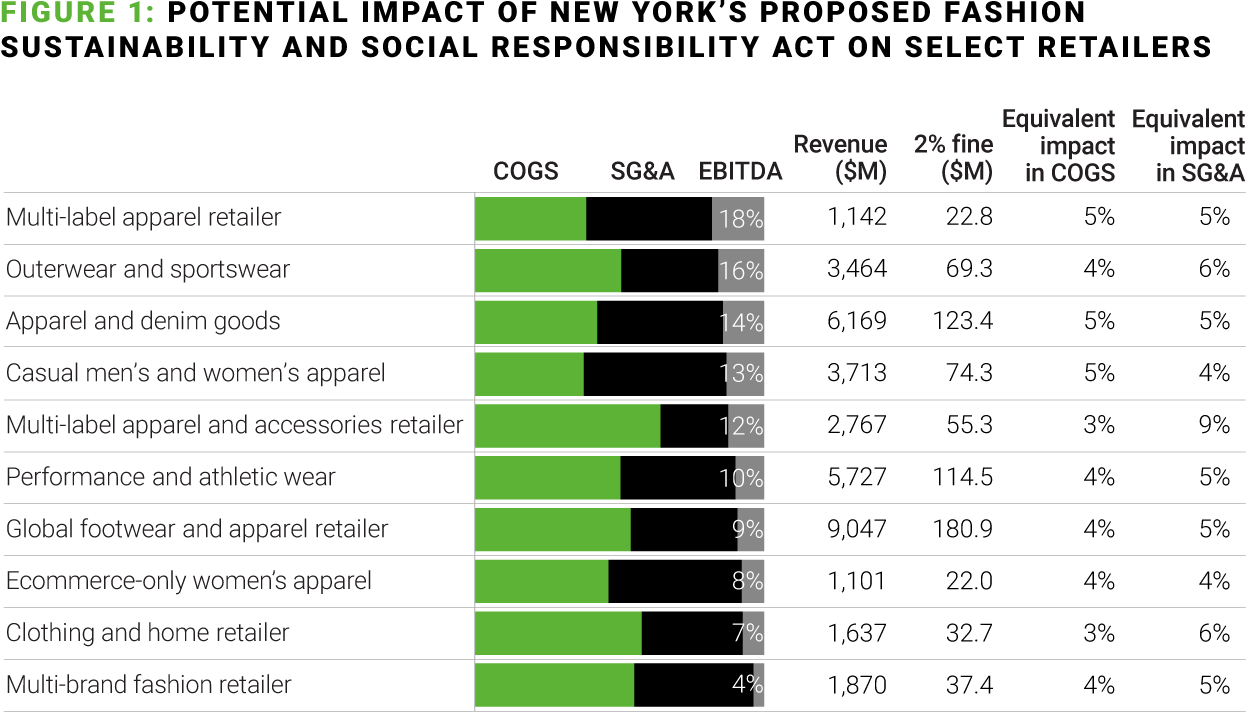The latest fashion trends continue to heat up global runways, but unfortunately, the industry is also heating up the globe. According to environmental analysis, fashion generates approximately 10% of annual carbon emissions worldwide—more than maritime shipping and international flights combined. This makes it the world’s third-largest polluter, and what’s more, the World Bank estimates the industry’s consumption (at its current pace) will increase 50% by 2030.
As such, it’s no surprise governments are taking action. In October, California signed the Climate Corporate Data Accountability Act and Climate-Related Financial Risk Act into law. These will require companies with more than $1 billion in revenue and business in the state to disclose Scope 1, 2, and 3 greenhouse gas emissions, while also detailing the measures they are adopting to lower climate-induced financial risks.
At a federal level, the SEC is exploring similar regulation around climate-related disclosures. Meanwhile in New York, lawmakers are floating a Fashion Sustainability and Social Responsibility Act that would require companies with more than $100 million in global revenue selling in the state to trace and map half of their suppliers by volume across the complete supply chain, from raw materials to production. Those not in compliance could be fined up to 2% of annual revenue, a sizable chunk of many retailers’ profit margins. Our analysis shows retailers would need to tighten COGS or SG&A budgets by 5% to recoup these lost dollars—although that does not factor in the reputational and brand damage that a breach of this potential law would cause:

It’s no longer enough for retailers to simply bake sustainability into marketing campaigns—enacting and executing a plan to improve sustainable practices is now a financial necessity that must be integrated into all operational decisions. If you don’t connect these initiatives to tangible KPIs and margin improvement, you will soon face profitability issues alongside compliance risks.
For retailers that still struggle in this space, it’s crucial to adopt a sequential plan that mitigates more immediate regulatory risks while setting up the business for continued success. Below, we lay out our short, medium, and long-term strategy that will turn fashion companies from sustainable zero to hero:
Short-term: Establish proper internal controls and investments
To start, you must have the right systems and tools in place to measure Scope 1, 2, and 3 emissions. Your enterprise resource planning (ERP) and vendor management systems also need the capabilities to capture this data—carefully monitoring all emissions to track progress over time is now a table stakes business need.
When planning new capital investments, ensure all assets and expenditures are compliant with the latest environmental standards. For instance, buy LED lights instead of halogen and design store architectures to be carbon neutral.
Medium-term: Revamp your vendor strategy
Enlist the right advisors and auditors to properly define your sustainability protocols and requirements. This will ensure you have an appropriate system in place for measuring and evaluating value chain metrics. Value chain mapping is also key to ensuring you have the right data systems in place to quantify Scope 3 emissions. Map out and audit your suppliers and supply chain to better understand operations; beyond your sustainability strategy, this mapping will aid with required CTPAT supply chain security certification.
If your suppliers are not currently transparent around upstream data, let them know that for compliance reasons, you will need increased transparency to continue the business relationship. We believe it’s only a matter of time until the fashion industry adopts a zero-tolerance policy around compliance risks.
To help, we developed a proprietary methodology and toolkit called Should-Carbon that simplifies the complex process of calculating and implementing carbon reduction efforts. This makes it easier for companies to measure and reduce difficult Scope 3 emissions driven by upstream suppliers in supply chain operations.
Long-term: Implement a holistic product development, product design, and marketing strategy
Incorporate circular design principles into your product design strategy. Construct your clothing and apparel to be reused, shared, or refurbished, and utilize recyclable materials in your packaging to reduce plastic usage. You can also drive innovation in your design and development strategies through clever use of raw materials, like Coach did with Coachtopia, a program that rethinks the end-to-end product life cycle. Coachtopia takes the brand’s unused leather and other production waste and repurposes the excess into new Coach bags and accessories.
If it makes sense, a thoughtfully executed resale or second-hand channel can boost brand loyalty and reputation, and potentially bring in customer segments priced out of your standard offerings. Those that don’t create their own second-hand channels can establish partnerships to reduce product end-of-life waste. Third-party service providers and “recommerce” platforms make it easier to ramp up operations, offering logistics support and capabilities that are harder to build and manage internally.
It’s a necessity, no longer a luxury, to emphasize sustainability across the organization. The need will become even more pressing with time—regardless of where you sit on your journey, our advice will allow you to reduce your carbon footprint while increasing your bottom line.

